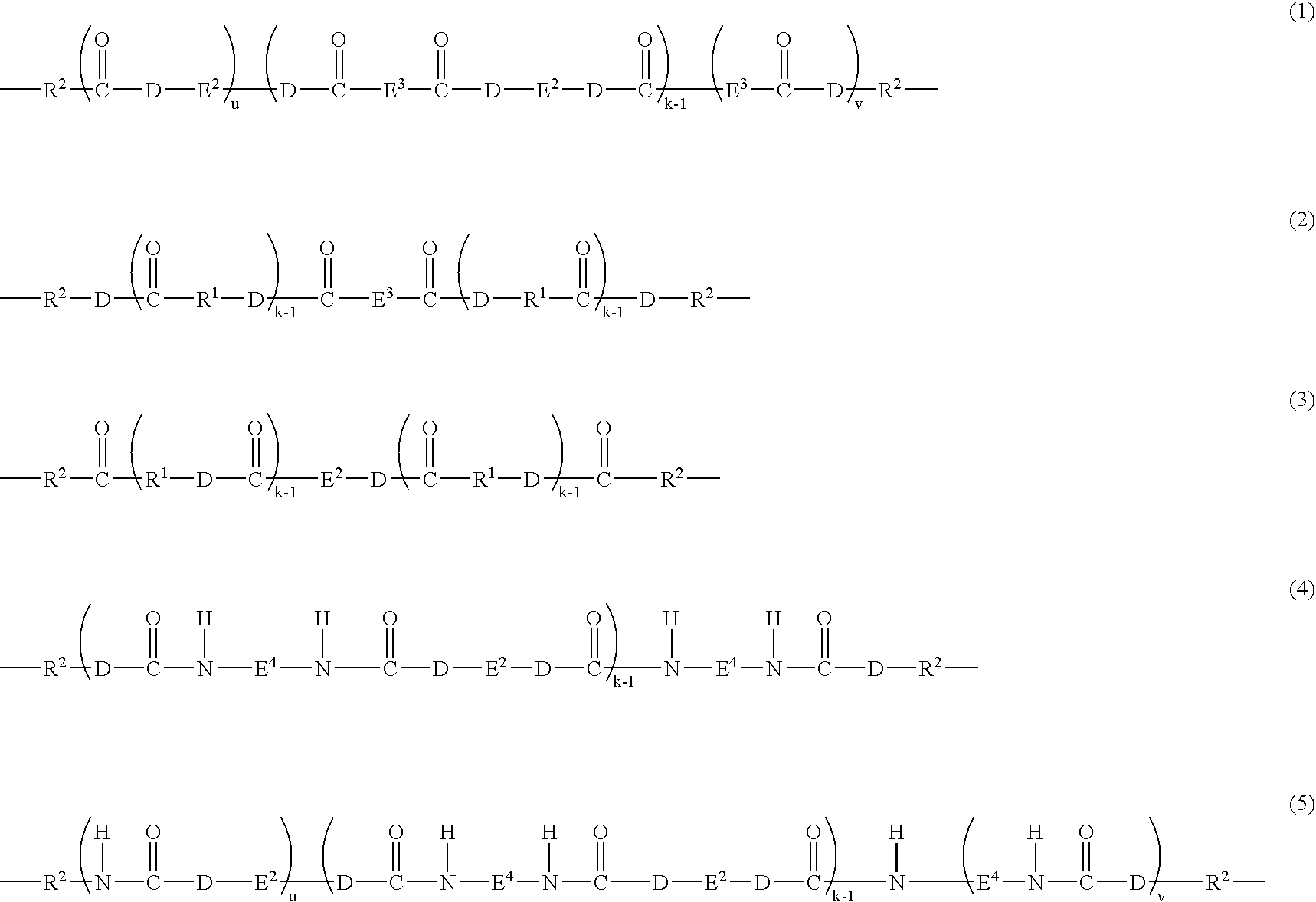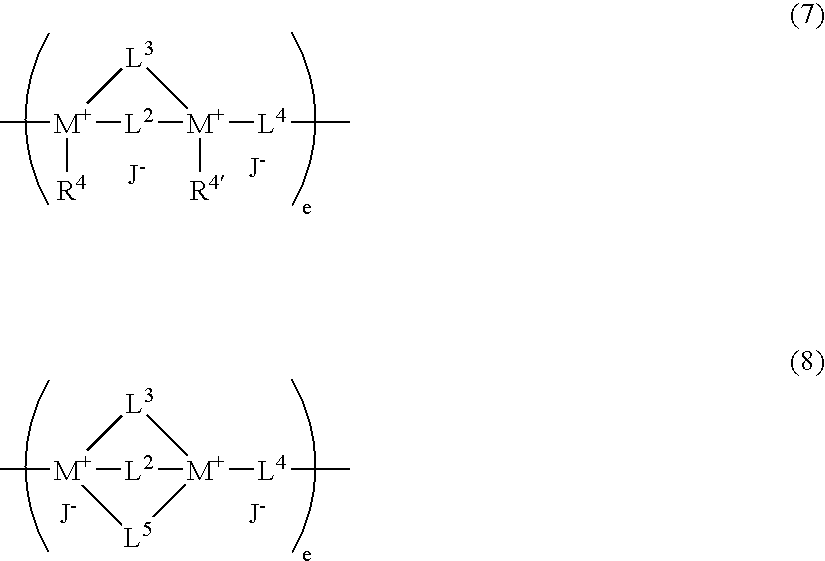Antistatic resin composition
- Summary
- Abstract
- Description
- Claims
- Application Information
AI Technical Summary
Benefits of technology
Problems solved by technology
Method used
Image
Examples
synthesis example 1
[Preparation of Polyetheresteramide (B1-1)]
In this example, 66.9 parts of ε-caprolactam, 33.1 parts of adipic acid, 0.3 part of antioxidant (Irganox 1010 produced by Ciba Speciality Chemicals Company, applied hereinafter) and 6 parts of water were added into an autoclave made from stainless steel. The air within the autoclave was then replaced with nitrogen, and the autoclave was closed and the mixture was heated, in the closed system, to 220° C. under a raised pressure of 0.3-0.5 MPa with stirring for 4 hours, to produce 96 parts of polyamide having an acid value of 374 and carboxyl groups at two terminals thereof. Next, 160 parts of polyethyleneglycol (Mn=500) and (0.5 part of zirconium acetate were added into the reaction mixture, and polymerization was conducted under 245° C. and a reduced pressure of 0.13 kPa for 5 hours to produce a viscous polymer. The polymer was taken out on a belt in the form of strand and made into pellets, so that polyetheresteramide (B1-1) was obtained...
synthesis example 2
[Preparation of Polyetheresteramide (B1-2)]
In this synthesis example, polyamide was produced essentially with the same method of Synthesis Example 1, except that 66.9 parts of ε-caprolactam and 33.1 parts of adipic acid were replaced by 83.5 parts of ε-caprolactam and 16.5 parts of terephthalic acid. Thereby, 96 parts of polyamide having an acid value of 112 and carboxyl groups at two terminals thereof was obtained. Next, polyetheresteramide (B1-2) was obtained using essentially the same method of Synthesis Example 1, except that 160 parts of polyethyleneglycol (Mn=500) was replaced by 144 parts of an EO-adduct (Mn=1500) of bisphenol A. The refractive index of (B1-2) was 1.512.
synthesis example 3
[Preparation of Polyetheresteramide (B1-3)]
In this synthesis example, polyamide was produced essentially with the same method of Synthesis Example 1, except that 66.9 parts of ε-caprolactam and 33.1 parts of adipic acid were replaced by 67.1 parts of ε-caprolactam and 32.9 parts of terephthalic acid. Thereby, 96 parts of polyamide having an acid value of 225 and carboxyl groups at two terminals thereof was obtained. Next, polyetheresteramide (B1-3) was obtained using essentially the same method of Synthesis Example 1, except that 160 parts of polyethyleneglycol (Mn=500) was replaced by 57.6 parts of an EO-adduct (Mn=300) of bisphenol A. The refractive index of (B1-3) was 1.526.
PUM
| Property | Measurement | Unit |
|---|---|---|
| Length | aaaaa | aaaaa |
| Haze | aaaaa | aaaaa |
| Haze | aaaaa | aaaaa |
Abstract
Description
Claims
Application Information
 Login to View More
Login to View More - R&D
- Intellectual Property
- Life Sciences
- Materials
- Tech Scout
- Unparalleled Data Quality
- Higher Quality Content
- 60% Fewer Hallucinations
Browse by: Latest US Patents, China's latest patents, Technical Efficacy Thesaurus, Application Domain, Technology Topic, Popular Technical Reports.
© 2025 PatSnap. All rights reserved.Legal|Privacy policy|Modern Slavery Act Transparency Statement|Sitemap|About US| Contact US: help@patsnap.com



